by Lisa Cooke | Jan 11, 2017 | 01 What's New, Genealogy Gems Podcast
The Genealogy Gems Podcast
Episode 199
with Lisa Louise Cooke

In this episode, Lisa celebrates Canada’s 150th anniversary with Claire Banton from Library and Archives Canada. You’ll also hear how Lisa will be marking another anniversary in 2017: the 10th year of this Genealogy Gems podcast.
More episode highlights:
- An inspiring follow-up email from Gay, whose YouTube discovery Lisa shared in episode 198, and a great conference tip from Barbara just in time for RootsTech.
- Genealogy Gems Book Club Guru Sunny Morton announces the new Book Club title.
- Your DNA Guide Diahan Southard shares thoughts about DNA testing with kids.
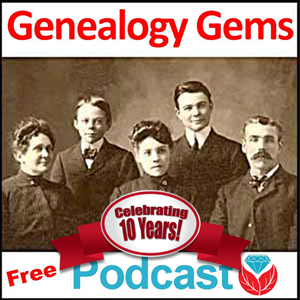 JOIN THE CELEBRATION! 10th ANNIVERSARY AND 200th EPISODE
JOIN THE CELEBRATION! 10th ANNIVERSARY AND 200th EPISODE
You’re invited to send in well-wishes and win a chance at a prize!
Email Lisa by January 31, 2017 at genealogygemspodcast @ gmail.com OR call her voicemail line at 925-272-4021.
Share your first name and where you live.
Share a memory of listening to this podcast, such as: When did you start listening? What’s one of your favorite things you’ve learned from this show?
Lisa will randomly select one response to receive a free year of Genealogy Gems Premium membership. Thanks for helping all of us here at Genealogy Gems celebrate 10 years of doing something we love!
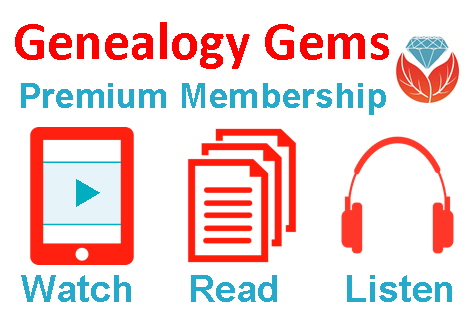
NEWS: ROOTSTECH 2017
RootsTech will be held on February 8-11, 2017 in Salt Lake City, UT: learn more and register.
Genealogy Gems events at RootsTech
Lisa will be live-streaming FREE sessions the marked session via the free Periscope app. Get it in Apple’s App Store or Google Play. Sign up for a free account and follow Lisa Louise Cooke to tune in. Sign up for notifications in Periscope, and your phone will “ping” whenever Lisa starts streaming! Broadcasts stay in the Periscope app for 24 hours. Like and follow the Genealogy Gems Facebook page to hear about more streaming sessions!
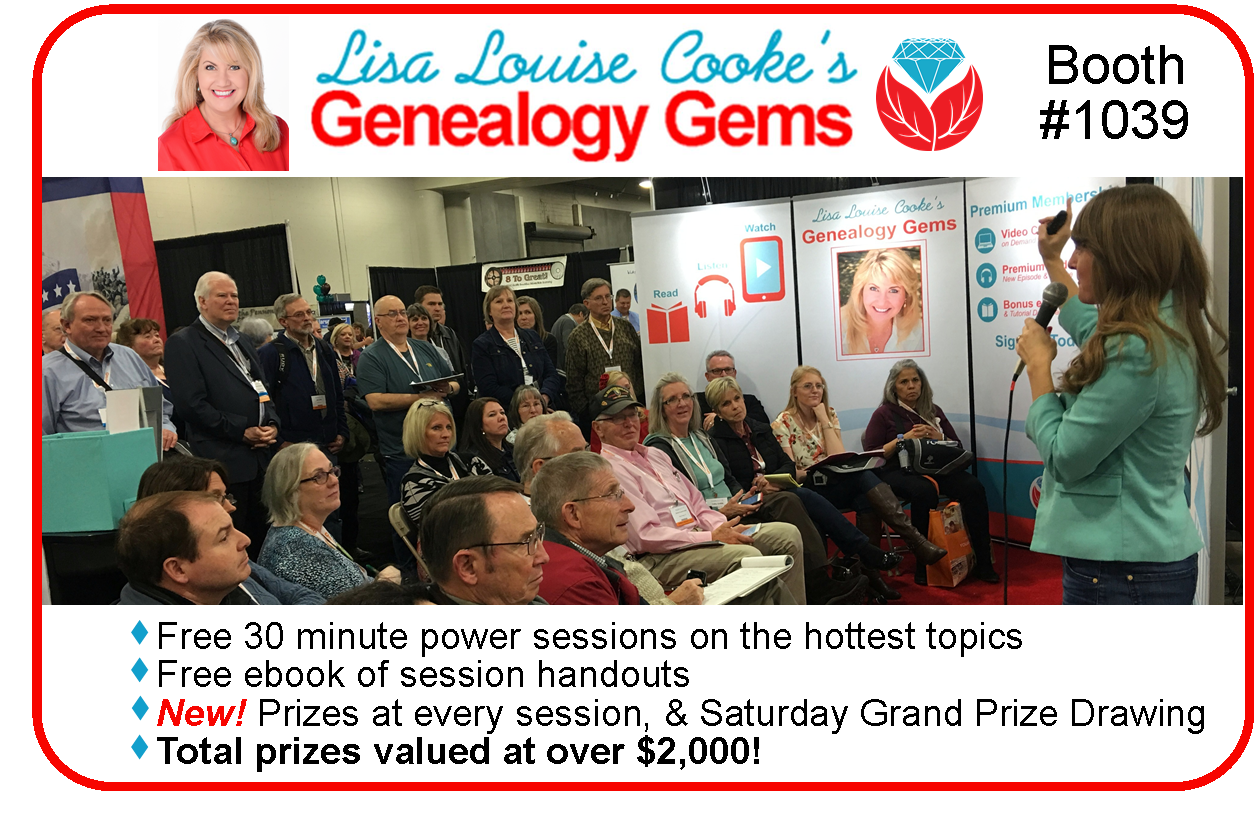

NEWS: FAMICITY KICK-STARTER
 Famicity is a free, private website for families to share pictures, videos, memories, family activities and the family tree. The company has been very successful in France where it was launched, and the founder is working to bring the new English platform to the United States. He’s launched a Kickstarter campaign to support their U.S. launch. Click here to support it.
Famicity is a free, private website for families to share pictures, videos, memories, family activities and the family tree. The company has been very successful in France where it was launched, and the founder is working to bring the new English platform to the United States. He’s launched a Kickstarter campaign to support their U.S. launch. Click here to support it.
BONUS CONTENT FOR GENEALOGY GEMS APP USERS
If you’re listening through the Genealogy Gems app, your bonus content for this episode is a tutorial on Feedly, an easy way to consume just the online content you want. The Genealogy Gems app is FREE in Google Play and is only $2.99 for Windows, iPhone and iPad users

Lisa Louise Cooke uses and recommends RootsMagic family history software. From within RootsMagic, you can search WebHints on FamilySearch.org, Findmypast.com and MyHeritage.com. Soon RootsMagic will also be able to search records and even sync your tree with Ancestry.com, too.
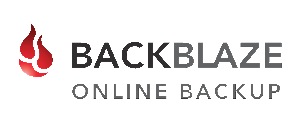 Keep your family history research, photos, tree software files, videos and all other computer files safely backed up with Backblaze, the official cloud-based computer backup system for Lisa Louise Cooke’s Genealogy Gems. Learn more at http://www.backblaze.com/Lisa.
Keep your family history research, photos, tree software files, videos and all other computer files safely backed up with Backblaze, the official cloud-based computer backup system for Lisa Louise Cooke’s Genealogy Gems. Learn more at http://www.backblaze.com/Lisa.
 MAILBOX: YOUTUBE DISCOVERY FOLLOW-UP
MAILBOX: YOUTUBE DISCOVERY FOLLOW-UP
Remember the YouTube success story from Genealogy Gems Podcast episode 198? Gay as a young woman attended a dedication ceremony for the saline water treatment in Freeport, Texas?and with Lisa’s tips she found video footage on YouTube.
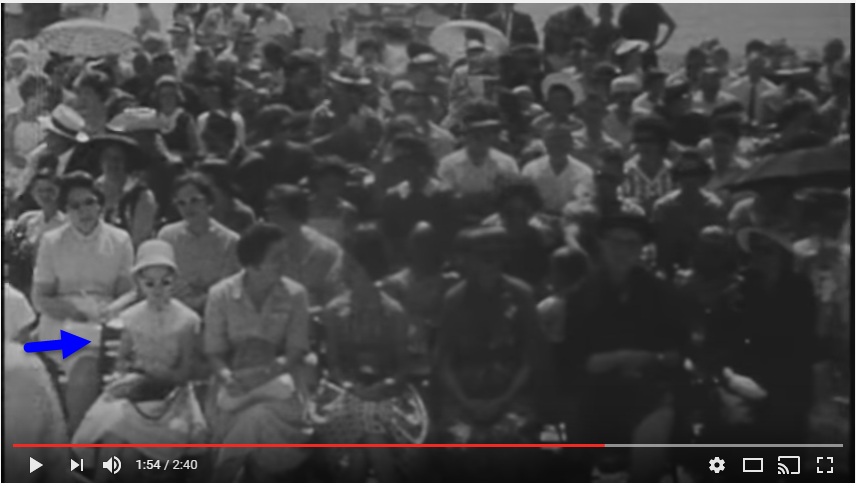
Gay wrote back to send us more about that, including this page from her diary that day and this news clipping. Check out the news clipping to see why that plant was so important, Pres. John F. Kennedy gave the dedication speech. (See what newspapers can tell you?!)
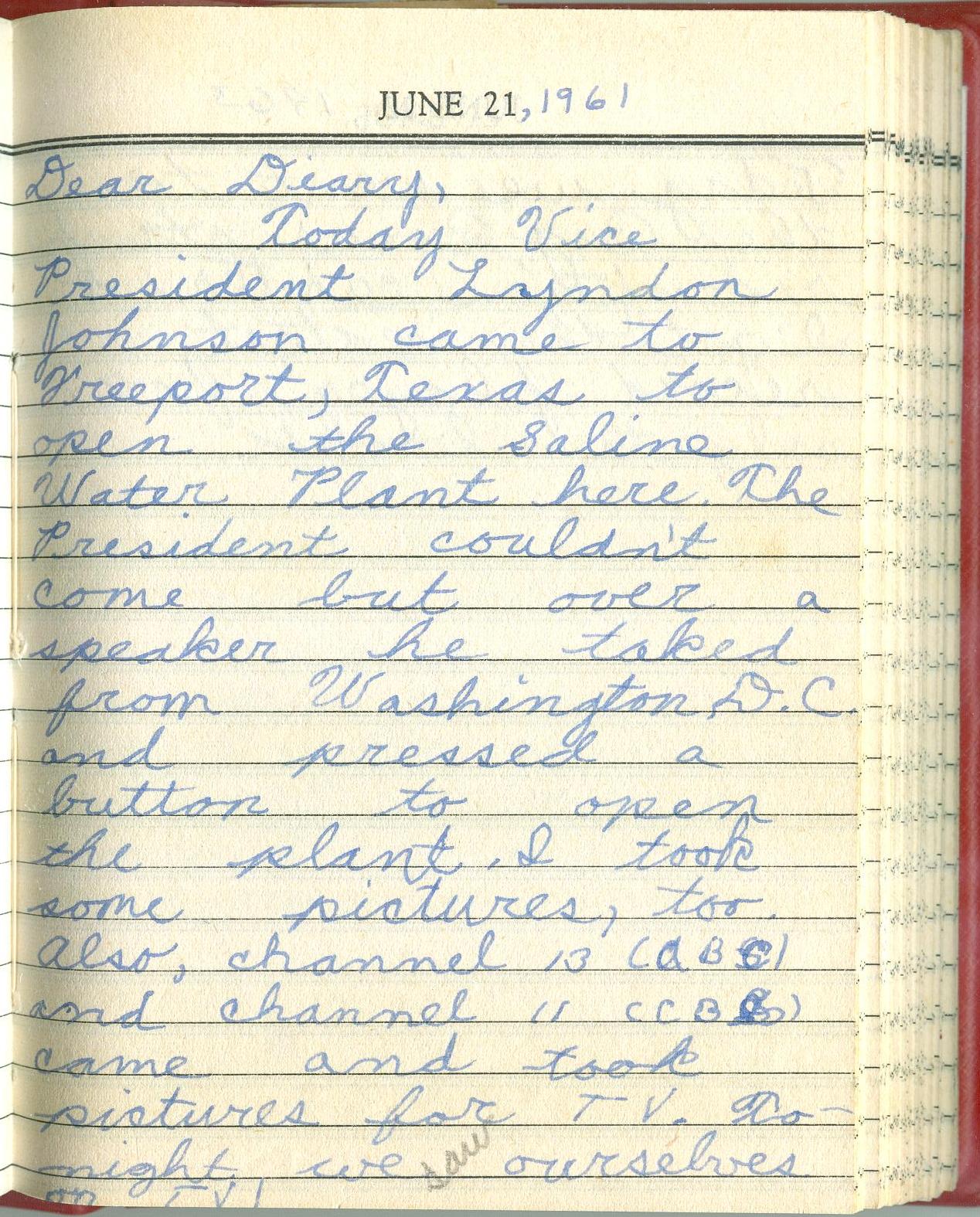
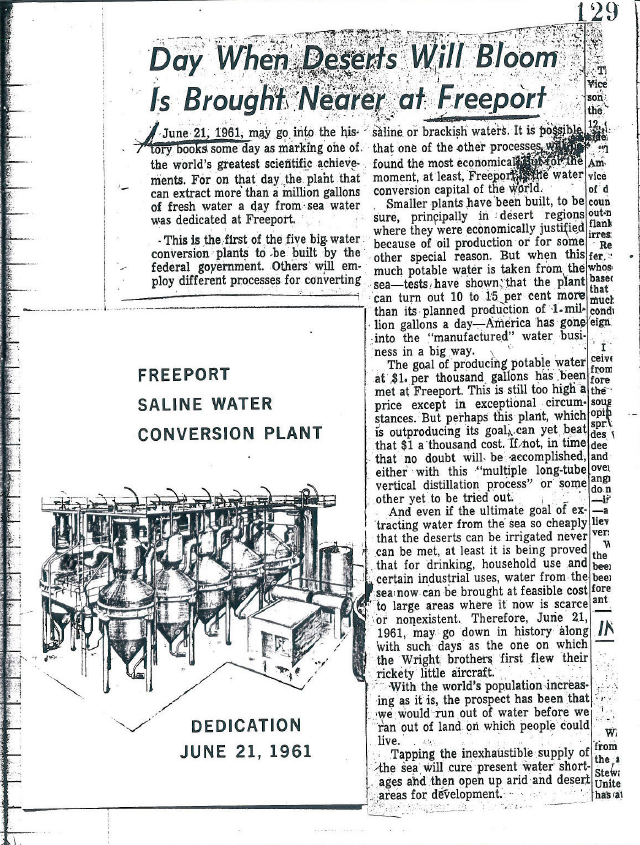
Find your own family history on YouTube. Click here to learn how or read an entire chapter on YouTube in Lisa Louise Cooke’s book, The Genealogist’s Google Toolbox, 2nd revised edition.
Click here to learn how to turn family stories and artifacts like these into videos to share with relatives.
Learn to find articles such as this one that can put your family’s story in context?locally and even nationally. Read How to Find Your Family History in Newspapers by Lisa Louise Cooke.
INTERVIEW: CLAIRE BANTON, LIBRARY AND ARCHIVES CANADA (LAC)
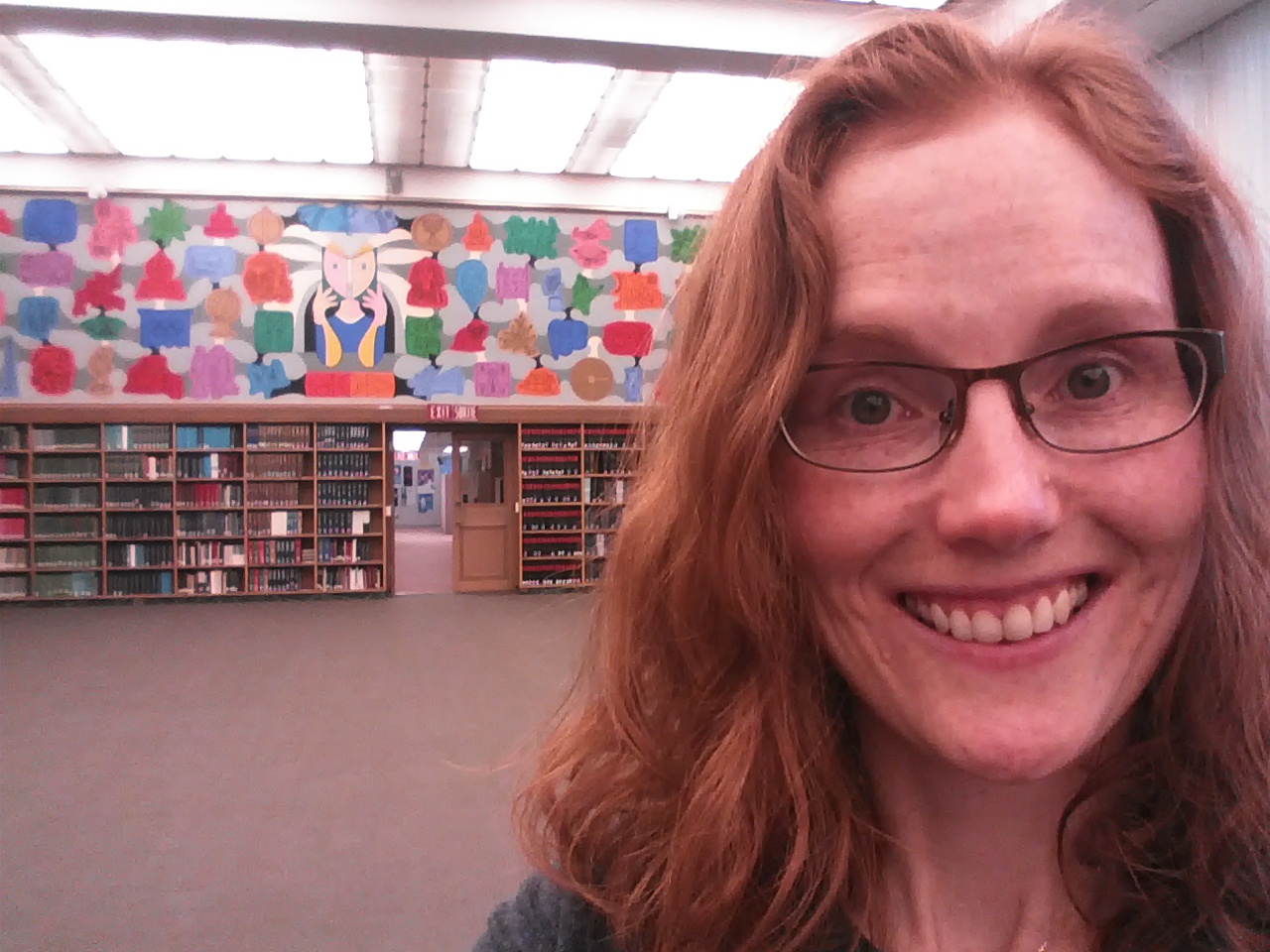 Claire Banton obtained her Masters of Library and Information Studies degree in 2006. She has worked in Reference Services at LAC for 10 years, where she has enjoyed learning something new every day. She is currently Chief, Orientation Services, where she works with an awesome team who help people search for information. She loves being an information detective and helping people overcome their research challenges.
Claire Banton obtained her Masters of Library and Information Studies degree in 2006. She has worked in Reference Services at LAC for 10 years, where she has enjoyed learning something new every day. She is currently Chief, Orientation Services, where she works with an awesome team who help people search for information. She loves being an information detective and helping people overcome their research challenges.
Claire’s tips for genealogy research with LAC:
LAC is very different from the average library. It is both a national library (search the library catalog here) and a a national archive (search the archival catalog here). You don’t have to have an account to search.
Start with the LAC website (genealogy resources page) whether you are visiting in person or not. There are loads of free databases and some unindexed digitized records. The Topics page will tell you what they do and don’t have.
There was no border control from the US to Canada prior to 1908, so there are no Canadian records of earlier crossings. [Tip: see border crossings to the US, 1895-1956 at FamilySearch.org and Ancestry.com.]
Call LAC directly for quick answers. Schedule a Skype call with a genealogy expert to get more in-depth answers: provide background information ahead of time.
Click here to explore (and join) Canada’s 150th birthday celebration.
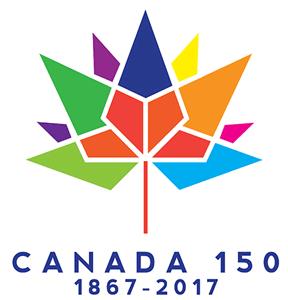
 GENEALOGY GEMS BOOK CLUB
GENEALOGY GEMS BOOK CLUB
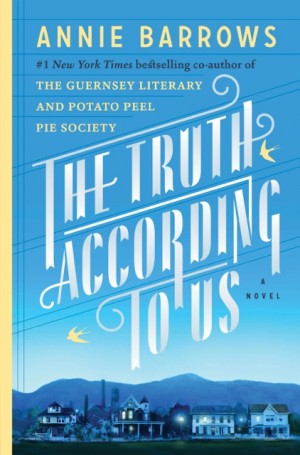
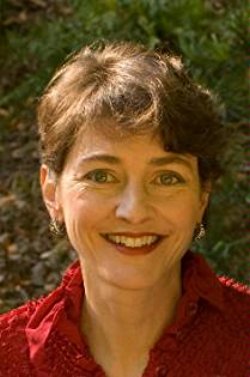
The Truth According to Us by internationally best-selling author Annie Barrows (co-author, The Guernsey Literary and Potato Peel Pie Society and author, Ivy and Bean, children’s book series)
It’s the summer of 1938, and wealthy young socialite Miss Layla Beck is now on the dole as a WPA worker, assigned to write a history of the small town of Macedonia, West Virginia. As she starts asking questions about the town’s past, she is drawn into the secrets of the family she’s staying with?and drawn to a certain handsome member of that family. She and two of those family members take turns narrating the story from different points of view, exploring the theme that historical truth, like beauty, is often in the eye of the beholder.
Click here to read an introduction to using WPA records for genealogy.
Click here to see more Genealogy Gems Book Club selections and how you can listen to Lisa’s upcoming exclusive conversation with author Annie Barrows about The Truth According to Us.
DNA WITH DIAHAN: DNA TESTING FOR KIDS?!
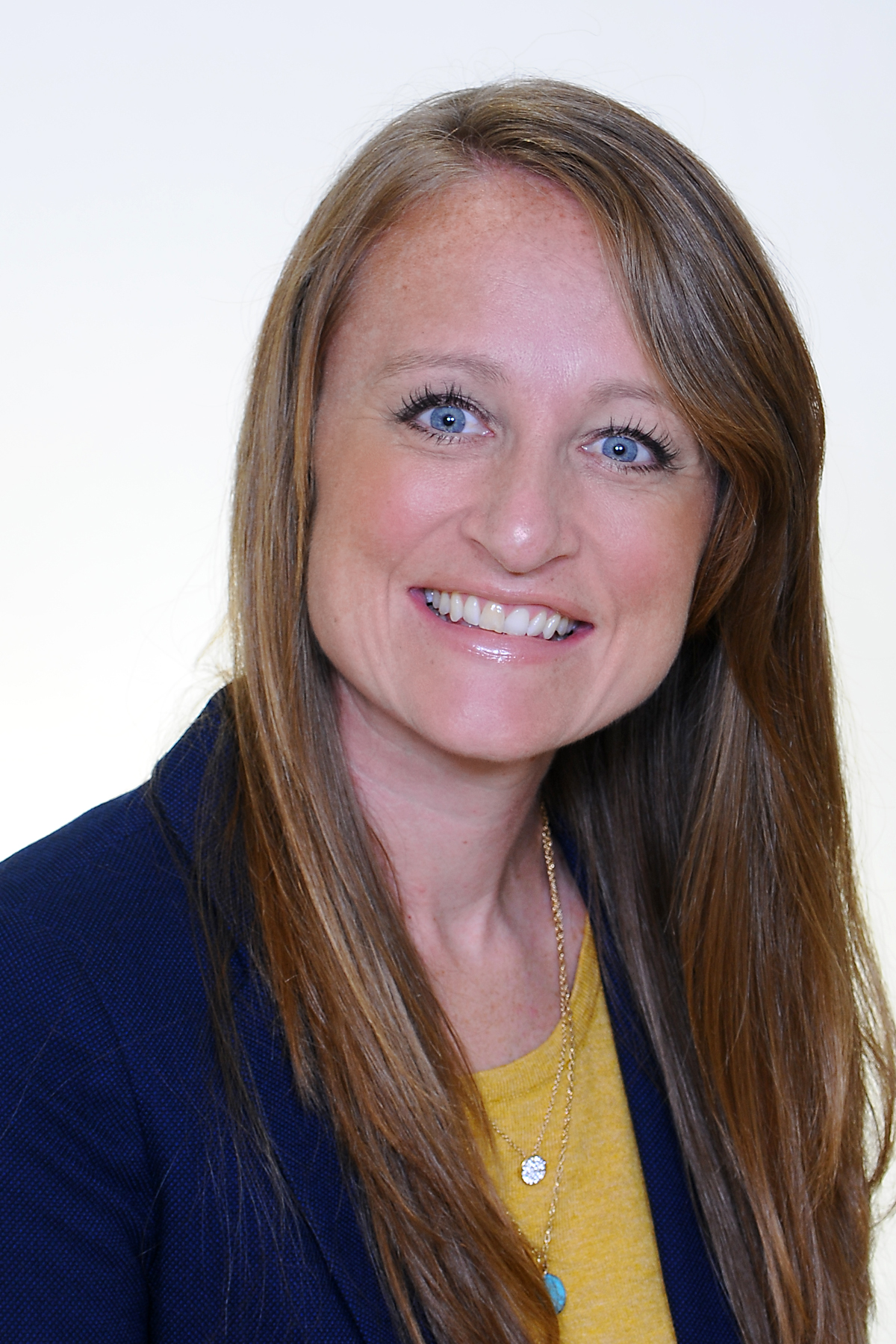 I was talking with a fellow mom the other day about all the demands that are placed on kids’ time today. They have school and homework, many have after school sports and clubs, religious meetings, some have jobs or at least chores at home, not to mention all the time required to text, check social media, and hang out with friends. As parents and grandparents, we want our children to spend time on things that matter, things that will prepare them for their future lives and mold them into their future selves.
I was talking with a fellow mom the other day about all the demands that are placed on kids’ time today. They have school and homework, many have after school sports and clubs, religious meetings, some have jobs or at least chores at home, not to mention all the time required to text, check social media, and hang out with friends. As parents and grandparents, we want our children to spend time on things that matter, things that will prepare them for their future lives and mold them into their future selves.
According to a 2010 study out of Emory University, if we want to encourage kids toward an activity that will positively impact them, we should steer them toward family history. The researchers reported that “children who know stories about relatives who came before them show higher levels of emotional well-being.”
Now, I know I don’t need to convince you of this. You are already sold on genealogy. But I share this in the hope that it will push you over the edge and this will erase any hesitancy you have about sharing this love with your children and grandchildren.
Now, since you know this is me, the genetic genealogist talking, you can probably guess what I’ll suggest for getting kids interested in family history. DNA testing is a great way to personally and physically involve them. First of all, there is the tangible process of taking the sample at home, and the marvel at how such a simple act can produce the amazing display of our ethnicity results.
Since each of us is unique, it will be fun for them to compare with you and other relatives to see who got what bit of where. This will naturally lead to questions about which ancestor provided that bit of Italian or Irish, and wham! You’ll be right there to tell them about how their 5th great grandfather crossed the ocean with only the clothes on his back, determined to make a new start in a new land.
If there are parts of the ethnicity report that you can’t explain, use that as a hook to encourage them to start digging and to find out why you have that smattering of eastern European or south east Asian. Taking them for a tour of the DNA match page you can show them how they share 50% of their DNA with their sister (whether they like it or not!) and how they share 25% with you, their grandparent!
DNA test results give kids a totally unique look at their personal identity with technology that is cutting edge. Looking at their DNA test results can turn into a math lesson, a science lesson, a geography lesson, a lesson on heredity or biology, a discussion on identity?wherever you want to go with it! DNA is the perfect introduction to the wonders that genealogy can hold, especially for children who are so good at wondering.
Click here to learn more about Diahan’s series of how-to videos, available to Gems fans for a special price. Or start your DNA journey with the guide that will help you get started with kids’ genetic genealogy:
Autosomal DNA for the Genealogist
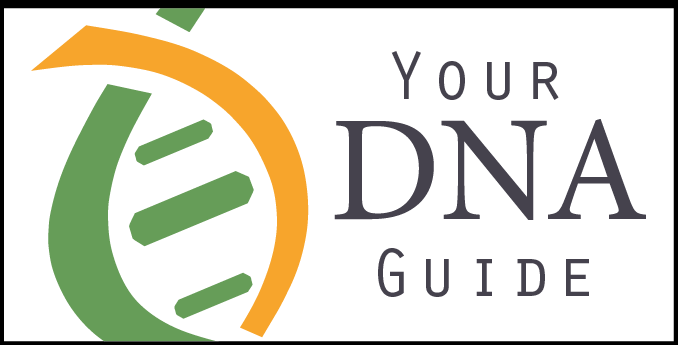
PROFILE AMERICA: ELLIS ISLAND
Click here to watch the official, award-winning documentary shown at Ellis Island free online at YouTube.
PRODUCTION CREDITS
Lisa Louise Cooke, Host and Producer
Sunny Morton, Editor
Amie Tennant, Content Contributor
Diahan Southard, Your DNA Guide, Content Contributor
Lacey Cooke, Service Manager
Vienna Thomas, Associate Producer
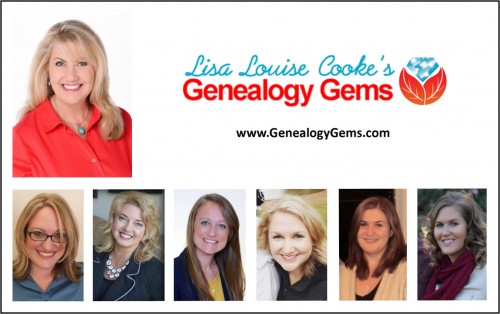
Check out this new episode!
Disclosure: This article contains affiliate links and Genealogy Gems will be compensated if you make a purchase after clicking on these links (at no additional cost to you). Thank you for supporting Genealogy Gems!
by Lisa Cooke | Jan 11, 2017 | 01 What's New, Military, Newspaper

Wikimedia Commons image; click to view.
What did your relatives experience during World War II? Look for answers with these step-by-step instructions for finding WWII newspaper content and tips for searching about the war progress in the 1940s.
We have covered so many gripping and inspiring World War II stories in recent months (such as this one), it makes me want to learn more about what happened to my own family. Newspapers are the first place I look for everyday news happenings. But for the 1940s, newspapers in the U.S. and some other places are still copyright-protected–meaning not so widely available online for free–and of course, millions of local newspaper pages are not digitized online yet.
Try these 3 steps for finding and accessing 1940s newspaper content:
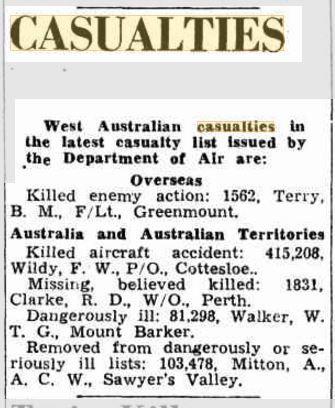 1. Understand what WWII newspapers may be available online
1. Understand what WWII newspapers may be available online
The major U.S. site for free digitized newspaper content, Chronicling America, recently started allowing post-1922 news, but it will take a while for copyright-cleared issues to post to the site (read more here.) Various state or local collections may vary; for example, the free Colorado Historical Newspaper Collection does have some WWII-era coverage.
Outside the U.S., Australia’s site Trove (which is free) does have digitized newspapers that include articles, like the 1942 casualty list from The Daily News (Perth), shown here. So do the overlapping British Newspaper Archive site and Findmypast.com’s British newspapers collection.
2. Explore premium and institutional databases for WWII newspapers
Start with digital newspaper content at free sites and subscription sites to which you have access. Then follow up with a trip to your local library, which likely offers additional historical newspaper databases. For example, in the U.S., these may include Access NewspaperARCHIVE, America’s GenealogyBank, America’s Historical Newspapers, America’s News, Newspaper Source, and ProQuest Historical Newspapers. Sometimes, you can access these databases from home with your library card log-in; if not, you’ll have to go to the library. (Genealogy Gems Premium members: check out Premium Podcast episode #125 for more great genealogical resources at public libraries.)
In the U.S., even these databases may only have limited coverage, such as titles from major cities for the 1940s. ProQuest Historical Newspapers has the Atlanta Constitution, Baltimore Sun, Boston Globe, Christian Science Monitor, New York Times, Wall Street Journal, and The Washington Post. Though these may not give you small-town details and perspectives on your own family, you will get a sense of the progress of the war from the perspective of those who were living through it, and how the public was responding.
3. Search for individual WWII newspapers
If you can’t find digitized content you want, widen your net. Search for titles of all active newspapers in your family’s city during the war. In the U.S., do that with the U.S. Newspaper Directory on Chronicling America. The same directory links to thousands of library holdings. WorldCat.org has even more; run a follow-up search here on any titles you don’t see holdings for on Chronicling America. If you’re local to where your family lived or can visit there, you may find copies at the public library. If you’re not local, you may have to try to order microfilmed copies through interlibrary loan. Ask your local Reference Librarian for assistance.
 Next, Google search for individual newspaper titles online. Though no longer actively digitizing and indexing newspapers, Google News Archive can help you locate online content for specific newspapers. Click here to access its alphabetical listing of newspapers. You can also enter keyword-searches in the search box on that webpage for all the newspapers listed there.
Next, Google search for individual newspaper titles online. Though no longer actively digitizing and indexing newspapers, Google News Archive can help you locate online content for specific newspapers. Click here to access its alphabetical listing of newspapers. You can also enter keyword-searches in the search box on that webpage for all the newspapers listed there.
As needed, run a follow-up Google search using the newspaper title, city, state, and date range; for the latter, use the format “1941..1945” with two periods between the dates and no spaces. This helps to filter your date range to these specific years.
Learn more about Googling your ancestors in newspapers, websites, books, photographs, and more in my book The Genealogist’s Google Toolbox.
What’s next?
 My book How to Find Your Family History in Newspapers is your ultimate guide to this topic, with tons of step-by-step instructions, online resources, and finding strategies. And, stay tuned for our up and coming post “Finding Family History in WWII Newspapers: Narrowing the Results” for more instructions on digitally searching WWII newspapers for war-related stories.
My book How to Find Your Family History in Newspapers is your ultimate guide to this topic, with tons of step-by-step instructions, online resources, and finding strategies. And, stay tuned for our up and coming post “Finding Family History in WWII Newspapers: Narrowing the Results” for more instructions on digitally searching WWII newspapers for war-related stories.
by Lisa Cooke | Jan 9, 2017 | 01 What's New, DNA |
As genealogists, we spend our time trying to ferret out the real story in our family’s oral history, or at least from the records they left behind. Record research is critical, but now we have an amazing new tool…DNA matching.

Genealogists constantly check family stories against the information on records, searching for what sounds plausible and what doesn’t. Even when we have total agreement in our records, more information often comes along…like DNA testing. In fact, DNA matching may shed light on even more apparent discrepancies.
Family Lore vs. DNA Findings
I recently read an article in the Wall Street Journal about a reporter, Cameron McWhirter, who shared finding that kind of discrepancy between his family lore and his DNA. He even goes so far as to say, “I am descended, at least partially, from liars.” He makes the point, “many immigrants reinvented themselves when they arrived here (the United States).” This could be a nice way of saying they had a chance to invent a new legacy, not just re-invent it. His assessments were certainly interesting and worth reviewing. It helps us see how DNA testing can affect the way we look at our family stories and traditional research results.
McWhirter may be like some folks today who have never set foot inside a courthouse or scanned through microfilm, but instead relies heavily on internet research. Some of these modern genealogists never gave their family history a second thought until, like McWhirter, the death of parents started to inspire them to dig deeper. Due to the large volume of information online, the budding genealogist is “quickly pulled into the obsessive world of modern genealogical research.”

Example of an ethnicity report from Ancestry.com.
McWhirter’s personal story was that while his dad was proudly and solidly a self-proclaimed Scot, the records and DNA matching revealed his heritage was actually from Ireland and eastern Europe. McWhirter says that his “father hated Notre Dame, but judging by my results he could have been one-quarter to one-half Irish. He spoke dismissively of people from Eastern Europe, but part of his genetic code likely came from that region.”
McWhirter’s evaluation of his genetic report includes only his ethnicity results, which as you can hear, were meaningful to him in the way that flew in the face of his father’s prejudices and assertions of his own identity.
However, the ethnicity results fall short of the point of testing for most genealogists.
He has the opportunity to more powerfully transform his sense of family identity by taking a look at his match list. Here, he may see an actual living cousin who was also descended from his German great-grandmother, who maybe never mentioned that she was also Jewish.
The Real Goal: DNA Connections to Living Family
Connecting with other cousins who also have paper trails to our ancestors serves to provide further confidence that we have put all the pieces together and honored the right ancestor with a spot on our pedigree chart. We multiply our own research efforts by finding more people like us—literally—who are descended from the same people. As long as they are as diligent in their research as we are, we can make these connections that could finally bust through those genealogy brick walls and more.
At a recent conference, I met a fifth-cousin. Even with a connection that distant, it was exciting and it encouraged us to want to look again at our connecting ancestors. To me, that is the bigger picture and the real goal—when the paper trail comes together with the DNA results and turns into real live cousins.
The Next Step: Using Your DNA Results to Find Living Family
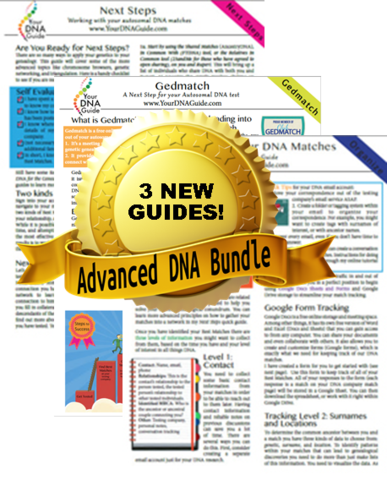 Maybe you are like Cameron McWhirter: you’ve taken a DNA test, been intrigued or disappointed by the ethnicity results, but haven’t fully explored your matches on your list. You may be seriously missing some opportunities! If that is you, I have written my new DNA quick guide just for you. It’s called “Next Steps: Working with Your Autosomal DNA Matches.” This guide will teach you how to leverage the power of known relatives who have been tested. You will get an intro to chromosome browsers and their role in the search process and access to a free bonus template for evaluating genealogical relationship of a match to the predicted genetic relationship. This guide also gives you a methodology for converting unknown relatives on your match list into known relatives.
Maybe you are like Cameron McWhirter: you’ve taken a DNA test, been intrigued or disappointed by the ethnicity results, but haven’t fully explored your matches on your list. You may be seriously missing some opportunities! If that is you, I have written my new DNA quick guide just for you. It’s called “Next Steps: Working with Your Autosomal DNA Matches.” This guide will teach you how to leverage the power of known relatives who have been tested. You will get an intro to chromosome browsers and their role in the search process and access to a free bonus template for evaluating genealogical relationship of a match to the predicted genetic relationship. This guide also gives you a methodology for converting unknown relatives on your match list into known relatives.
So check it out, either by itself or as part of my Advanced DNA bundle, which comes along with my new Gedmatch guide and a guide expressly for organizing your DNA matches.
by Lisa Cooke | Jan 6, 2017 | 01 What's New, Records & databases |
With an update to PERSI for genealogy, Pennsylvania birth and death records, and a tidbit or two from the United Kingdom and Scotland, you will start this year off right! It’s a new year and we are ringing in some great new and updated genealogical record collections.

PERSI for Genealogy
A monthly PERSI update has been added at Findmypast. With over 67,000 new articles and five new titles, the Periodical Source Index is the go-to source for those looking for stories of their ancestors. The new titles cover the American Historical Society, Chicago, Maryland, and British family histories & heraldry and will allow you to discover articles, photos, and other material you might not find using traditional search methods.
To fully appreciate PERSI as a genealogical tool, read our previous blog post “PERSI for Genealogy: the Periodical Source Index.” And you’ll find more related articles at the bottom of this article.
Pennsylvania – Birth and Death Records
This week, the Commonwealth of Pennsylvania released the 1911 births (105 years old) and 1966 death records (50 years old) to the public. This makes birth records publicly accessible from 1906 through 1911, and deaths 1906 through 1966. This collection index is free through the Pennsylvania Historical and Museum Commission portal.
Ancestry.com offers these records in digital form as well, but there is a subscription cost to use Ancestry. However, Pennsylvania residents can access these records free of charge through Ancestry.com Pennsylvania.
To access the index only, start with the Pennsylvania Historical and Museum Commission page on Vital Statistics for links to the indexes. You need to know the year of the event and the surname. If you do not know the year, you can search several years, one by one. These indexes are not digitized but are PDF files of the ones the State uses. If you locate a state file number for a certificate, you can order it from the State Archives.
However, if you are a Pennsylvania resident, you will be able to access the certificates digitally using the link to Ancestry.com Pennsylvania as mentioned above.
United Kingdom – Huntingdonshire – Marriages
New at Findmypast this week, the Huntingdonshire Marriages 1754-1837 collection contains over 1,000 names taken from 26 volumes of marriage records from the Huntingdonshire district of Cambridgeshire. These records will allow you to discover when and where your ancestor was married.
Scotland – Roxburghshire – Patient Registers
Also at Findmypast, explore the Roxburghshire, Kelso Dispensary Patient Registers 1777-1781. These registers contain over 1,700 names that list the date and outcome of patients’ treatment (such as cured, relieved of symptoms, or died). This may be particularly helpful for those unable to find a death date.
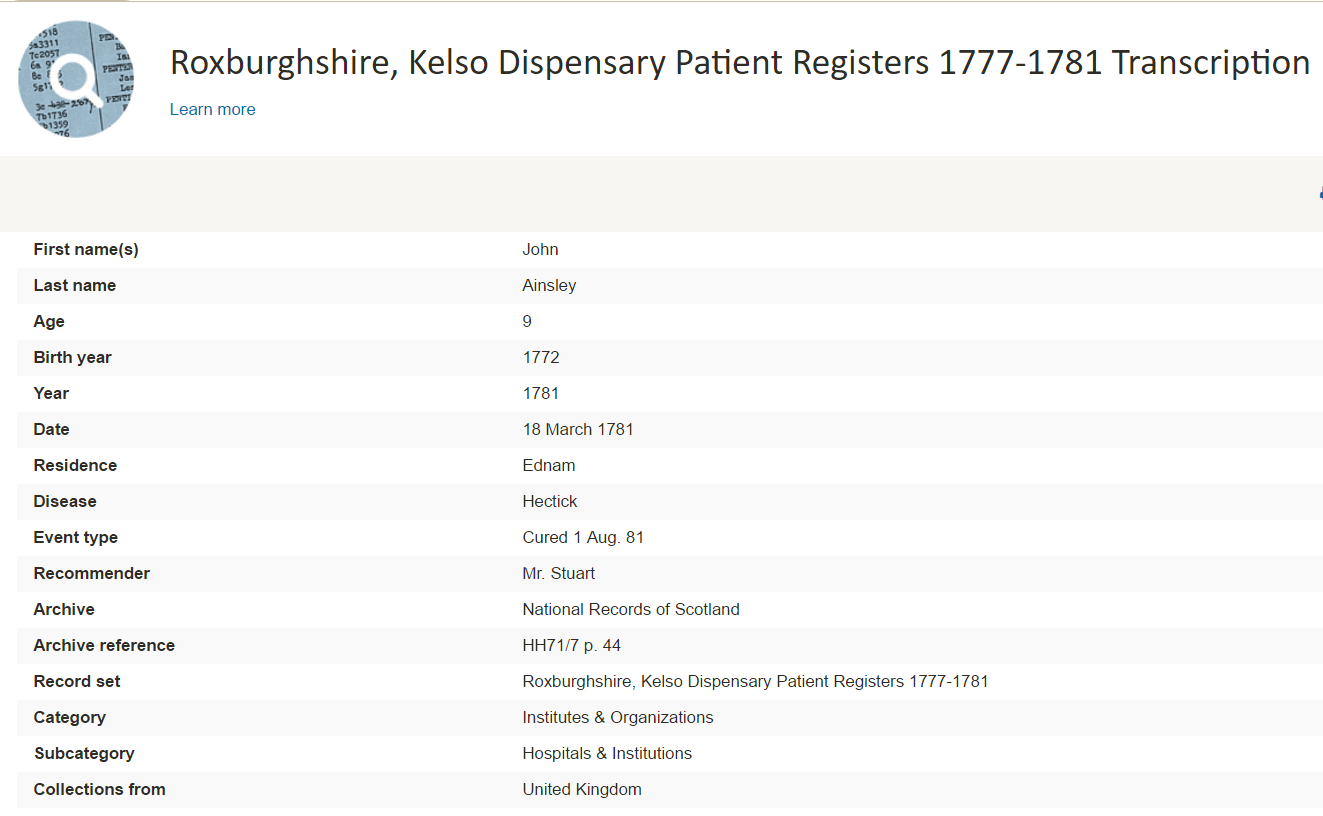
It should be noted that these are transcriptions only and you will not be able to see a digital image of the original.
More PERSI for Genealogy Articles
PERSI Digitized Collections Gaining Ground
New FindMyPast Hints Help Find Records
The Genealogy Gems Podcast Premium Episode 135: Compa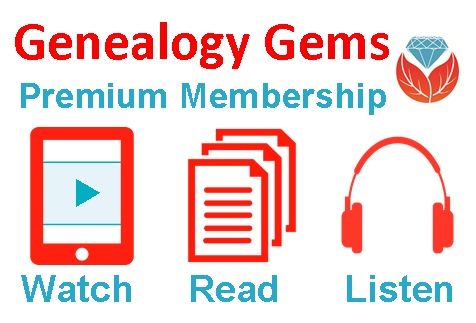 rsion of Google Scholar & PERSI (Premium Member Subscription Needed)
rsion of Google Scholar & PERSI (Premium Member Subscription Needed)
by Lisa Cooke | Jan 4, 2017 | 01 What's New, Conferences
Follow me, Lisa Louise Cooke, in 2017 as I share Google research techniques, newspaper research for genealogy, finding living relatives, and much more. I’ll be in Florida in February – here’s the scoop!
The Annual Pinellas Genealogy Society Seminar, co-sponsored by the Largo Public Library, is scheduled for 25 February 2017 at the Largo Public Library from 8 am to 4 pm. The library is located at 120 Central Park Drive, Largo, FL.
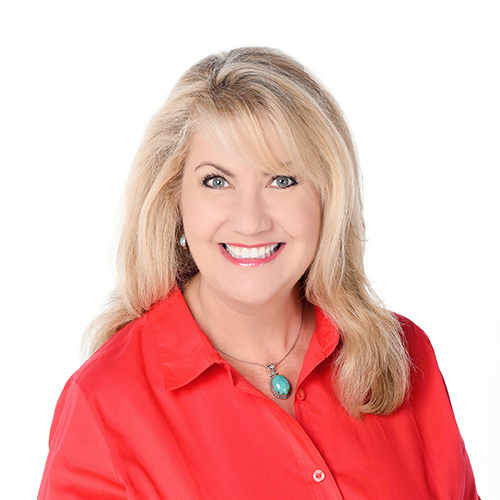 I will be the featured speaker, in addition to three great breakout speakers. My four presentations are:
I will be the featured speaker, in addition to three great breakout speakers. My four presentations are:
1. Google Tools and Procedures for Solving Family History Mysteries
2. Getting the Scoop on Your Ancestors with Newspapers
3. Nine Strategies for Finding Living Relatives
4. Future Technology and Genealogy – 5 Strategies You Need
The topics of the breakout sessions will be (1) “How Do I Organize My Genealogy Records?” by Debbe Hagner, (2) “What’s New at FamilySearch.org with Focus on ‘Memories’” by Debra Fleming, and (3) “English & Welsh Family History: Useful Online Research Resources” by Liz Pearson.
In addition to the speakers, this event boasts a continental breakfast, box lunch, raffles, door prizes, huge book sale, and plenty of time to network with guest organizations and other researchers. The all-inclusive registration fee is $40 for PGS members and $45 for non-members. After 18 February, the cost is $50, so register early.
What: The Annual Pinellas Genealogy Society Seminar co-sponsored by the Largo Public Library
When: Saturday, 25 February 2017, from 8 am to 4 pm
Where: The Largo Public Library at 120 Central Park Drive, Largo, FL.
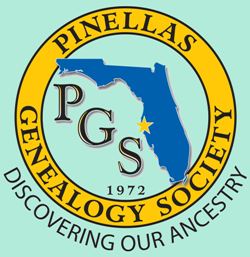
A detailed schedule of events and a registration form are found at http://www.flpgs.org/NMbrs/seminar/2017/Sem17.aspx . Questions can be addressed to pgsfla@yahoo.com.
My entire lecture schedule for 2017 can be viewed here. I hope to meet with many of you as you pursue genealogy greatness this new year!

 JOIN THE CELEBRATION! 10th ANNIVERSARY AND 200th EPISODE
JOIN THE CELEBRATION! 10th ANNIVERSARY AND 200th EPISODE

 Famicity is a free, private website for families to share pictures, videos, memories, family activities and the family tree. The company has been very successful in France where it was launched, and the founder is working to bring the new English platform to the United States. He’s launched a Kickstarter campaign to support their U.S. launch. Click here to support it.
Famicity is a free, private website for families to share pictures, videos, memories, family activities and the family tree. The company has been very successful in France where it was launched, and the founder is working to bring the new English platform to the United States. He’s launched a Kickstarter campaign to support their U.S. launch. Click here to support it. Keep your family history research, photos, tree software files, videos and all other computer files safely backed up with Backblaze, the official cloud-based computer backup system for Lisa Louise Cooke’s Genealogy Gems. Learn more at http://www.backblaze.com/Lisa.
Keep your family history research, photos, tree software files, videos and all other computer files safely backed up with Backblaze, the official cloud-based computer backup system for Lisa Louise Cooke’s Genealogy Gems. Learn more at http://www.backblaze.com/Lisa. MAILBOX: YOUTUBE DISCOVERY FOLLOW-UP
MAILBOX: YOUTUBE DISCOVERY FOLLOW-UP


 Claire Banton obtained her Masters of Library and Information Studies degree in 2006. She has worked in Reference Services at LAC for 10 years, where she has enjoyed learning something new every day. She is currently Chief, Orientation Services, where she works with an awesome team who help people search for information. She loves being an information detective and helping people overcome their research challenges.
Claire Banton obtained her Masters of Library and Information Studies degree in 2006. She has worked in Reference Services at LAC for 10 years, where she has enjoyed learning something new every day. She is currently Chief, Orientation Services, where she works with an awesome team who help people search for information. She loves being an information detective and helping people overcome their research challenges.
 GENEALOGY GEMS BOOK CLUB
GENEALOGY GEMS BOOK CLUB
 I was talking with a fellow mom the other day about all the demands that are placed on kids’ time today. They have school and homework, many have after school sports and clubs, religious meetings, some have jobs or at least chores at home, not to mention all the time required to text, check social media, and hang out with friends. As parents and grandparents, we want our children to spend time on things that matter, things that will prepare them for their future lives and mold them into their future selves.
I was talking with a fellow mom the other day about all the demands that are placed on kids’ time today. They have school and homework, many have after school sports and clubs, religious meetings, some have jobs or at least chores at home, not to mention all the time required to text, check social media, and hang out with friends. As parents and grandparents, we want our children to spend time on things that matter, things that will prepare them for their future lives and mold them into their future selves.







 1. Understand what WWII newspapers may be available online
1. Understand what WWII newspapers may be available online







 I will be the featured speaker, in addition to three great breakout speakers. My four presentations are:
I will be the featured speaker, in addition to three great breakout speakers. My four presentations are:



